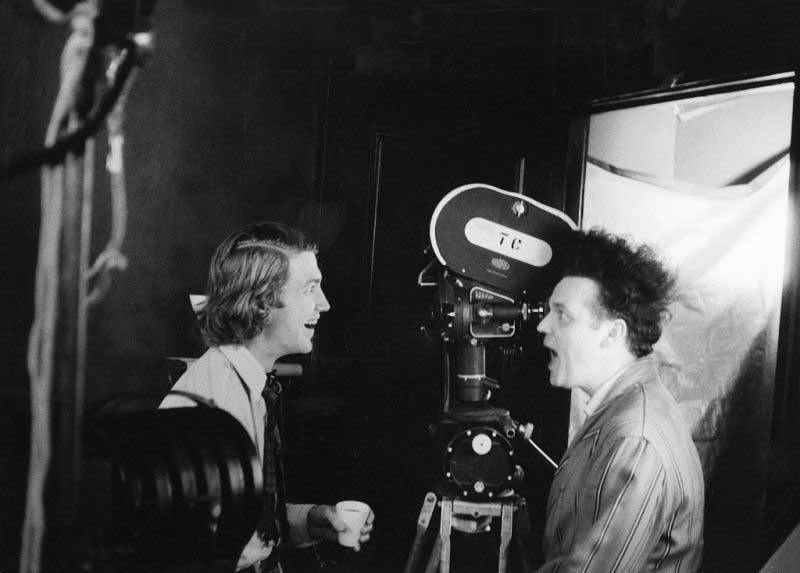David Lynch: A Unique Filmmaking Legacy
In the pilot episode of Twin Peaks, David Lynch masterfully captures the mundane rhythms of everyday life in a high school setting. A girl sneaks a cigarette, a boy is summoned to the principal's office, and a teacher takes attendance. The scene shifts abruptly when a police officer enters the classroom and whispers to the teacher. A scream pierces the air, and through the window, a student is seen sprinting across the courtyard. The teacher struggles to hold back tears, signaling an impending announcement. Lynch's camera then focuses on an empty seat, as two students exchange a knowing glance, realizing that their friend Laura Palmer is dead.
Lynch's work is renowned for its meticulous attention to surface-level details, yet he consistently delves deeper, revealing unsettling truths beneath the veneer of normalcy. This scene from Twin Peaks encapsulates the thematic essence of his career, blending the ordinary with the extraordinary. However, it's just one of many iconic moments in Lynch's extensive body of work spanning over four decades. Each fan might have a different favorite, reflecting the diverse appeal of his singular voice.
The term "Lynchian" has become synonymous with an unsettling, dream-like quality that defies easy categorization. It's a testament to Lynch's unique contribution to art, akin to "Kafkaesque," which captures a broader, more pervasive sense of disorientation. The passing of such a distinctive artist is deeply felt by fans, who appreciate the myriad ways his work resonates with them.
For budding film enthusiasts, watching Eraserhead is a rite of passage. This tradition continues across generations, as evidenced by a teenager and his girlfriend independently choosing to binge-watch Twin Peaks, reaching the Windom Earle era of Season 2. Lynch's work remains timeless, blending the odd with the familiar. This is evident in Twin Peaks: The Return (2017), where a child's bedroom evokes the 1950s, yet exists within a surreal, Lynchian universe of clones and otherworldly dimensions.
Despite the Hollywood trend of reviving nostalgic content, Lynch's approach in The Return was anything but conventional. He subverted expectations by not reintroducing key characters from the original series in a meaningful way, staying true to his un-Lynchian ethos. When Lynch did adhere to Hollywood norms, as with Dune, the result was a uniquely Lynchian film, despite its challenges. His vision, even in a commercial context, was unmistakable, as explored in Max Evry's book, A Masterpiece in Disarray.
Lynch's films often juxtapose beauty with the bizarre. The Elephant Man, his closest brush with mainstream acclaim, is both touching and unsettling, set against the backdrop of a harsh historical reality. This blend of elements is quintessentially Lynchian, defying genre classification yet instantly recognizable.
Blue Velvet exemplifies Lynch's ability to peel back the facade of suburban life, revealing a darker, surreal undercurrent. The film's setting, reminiscent of a Norman Rockwell painting, contrasts sharply with the sinister world Jeffrey discovers. Lynch's work, including Blue Velvet, draws from influences that are no longer prevalent, marking him as a singular figure in cinema.
Lynch's influence extends to contemporary filmmakers. Jane Schoenbrun's I Saw The TV Glow (2024) features a scene that echoes Lynch's style, inspired by Twin Peaks. Directors like Yorgos Lanthimos, Robert Eggers, Ari Aster, David Robert Mitchell, Emerald Fennell, Richard Kelly, Rose Glass, Quentin Tarantino, and Denis Villeneuve have all drawn from Lynch's well of surrealism and otherworldliness.
David Lynch's legacy is not just in his films but in his enduring influence on cinema. As we continue to explore the layers beneath the surface, we'll always be searching for those "Lynchian" elements that he so masterfully revealed.
 David Lynch and Jack Nance on the set of Eraserhead.
David Lynch and Jack Nance on the set of Eraserhead.





























